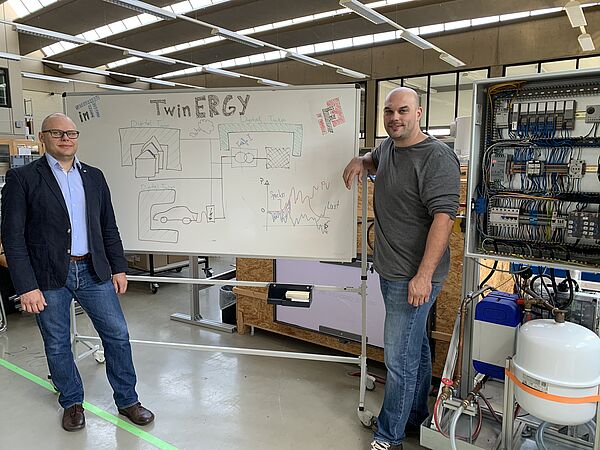The power grid in Germany was not made for the energy transition. Whereas electricity used to be generated mainly by large power plants, more and more electrical energy is now being generated decentrally and fed into the grid. At the same time, the amount of solar and wind power fluctuates greatly depending on the weather. The TwinERGY project is building a digital twin of the local power grid in order to make better predictions for the power supply in local neighborhoods, thereby optimizing operations and increasing the share of renewable energy. The project will start in November 2020 and is funded with 500,000 euros from the EU's Horizon2020 research program.
Just under a year ago, the grand coalition presented its climate targets for 2030. The share of green electricity is to rise to 65 percent by 2030. The challenge: A high share of solar and wind power increases the demands on the grids. The TwinERGY project therefore aims to ensure that the power grid is operated more efficiently. The aim is for citizens to be able to increasingly use the electricity from wind power and photovoltaic plants on their doorstep locally.
The experts on the TwinERGY team come from the Institute for Industrial Information Technology - inIT and the Future Energy - Institute for Energy Research (iFE) at the Ostwestfalen- Lippe University of Applied Sciences. "The project is a lighthouse project for smart energy supply in Germany," says Dr. Lukasz Wisniewski. He is a board member and research group leader at inIT and one of the project leaders of TwinERGY. As part of the project, he and his colleagues will develop the communication infrastructure and a digital twin of a local low-voltage grid. This is an ambitious project. The digital twin is a platform into which the researchers feed measured values, weather data and consumption data from households in a pilot neighborhood in the town of Hagedorn in the city of Steinheim. With the help of algorithms, they calculate in advance how much energy will be generated and consumed and when. With this knowledge, network operators and energy managers can better plan how energy should be optimally distributed. For consumers, it has the advantage of increasing their use of renewable electricity, which is also stored locally in electrical storage systems, for example. Intelligent systems in households ensure that, for example, the e-car in the carport is charged when as few emissions as possible are generated.
"Our goal is to make the power grid smart and ready for the energy transition," says Professor Johannes Üpping of Future Energy - Institute for Energy Research (iFE). "We aim to keep the added value of renewable energy in the region while reducing the cost of electricity supply." Households in the Hagedorn district of the city of Steinheim participating in the project will be shown the status of their local power grid in real time via a dashboard. This makes it possible to see at any time how much electricity they are generating, storing and feeding into the grid. This allows smart home appliances, such as the heat pump, and also the residents themselves to adjust their behavior and, for example, turn on their washing machine or dishwasher at the optimal time.
The TwinERGY project is part of Horizon2020, the EU's largest research and innovation program to date. In addition to TH OWL, 17 other partners from 11 EU countries are involved, coordinated by the University of Patras in Greece. The TwinERGY project will initially be funded for three years. One of the goals is to transfer the findings from the project to other regions in the EU.


